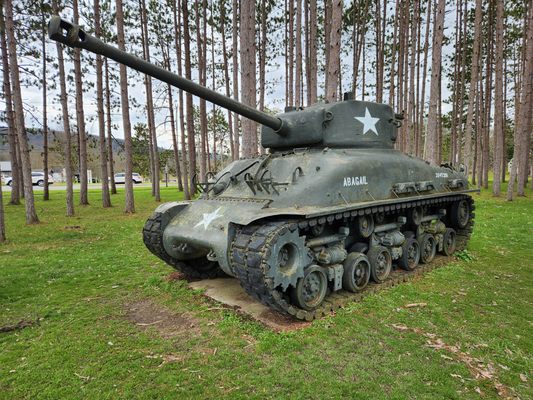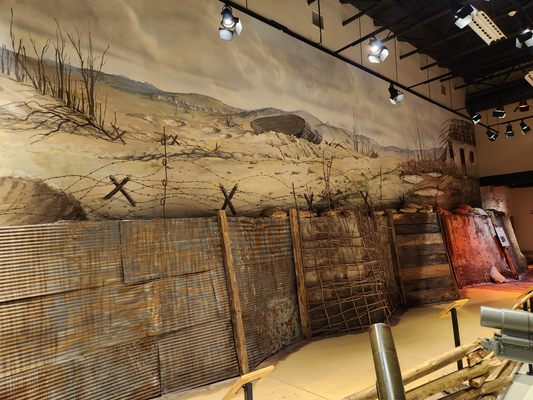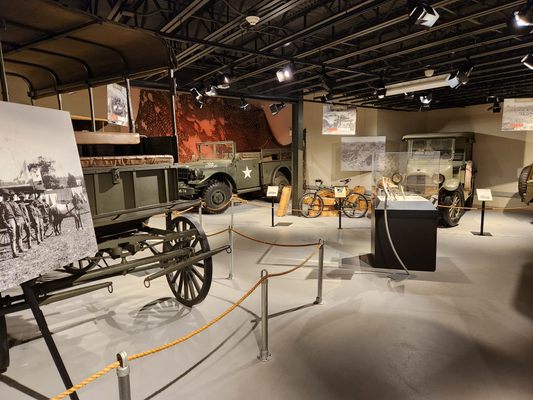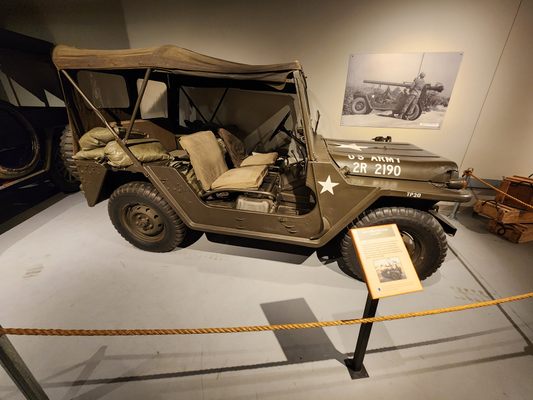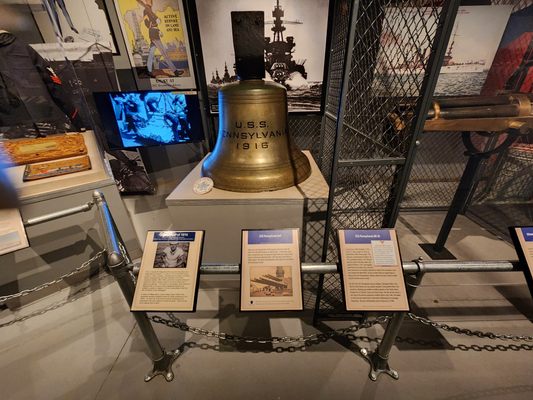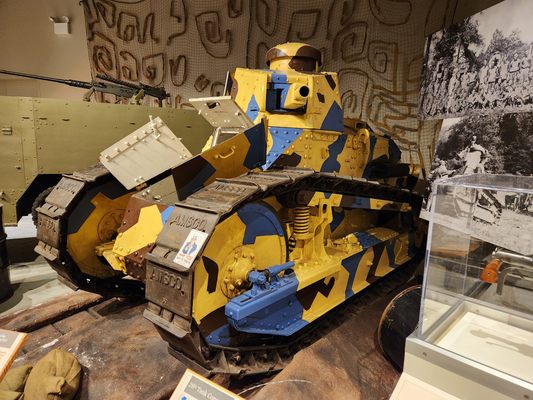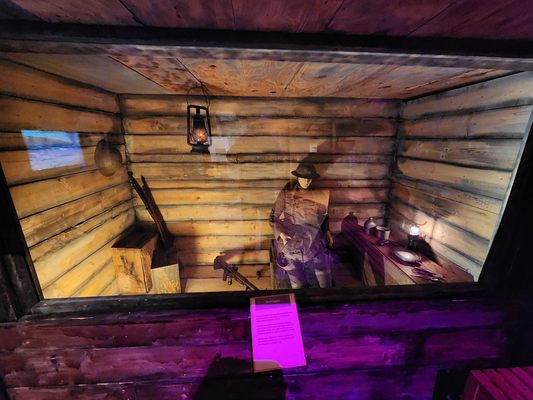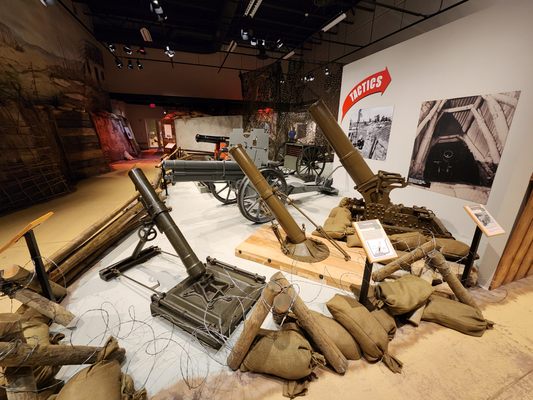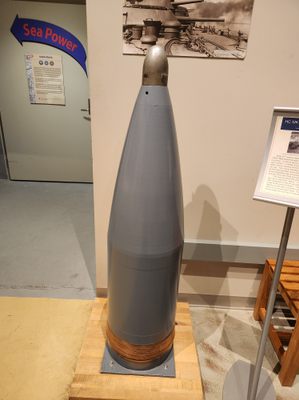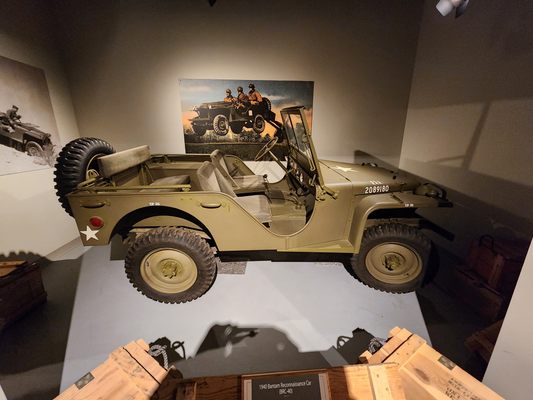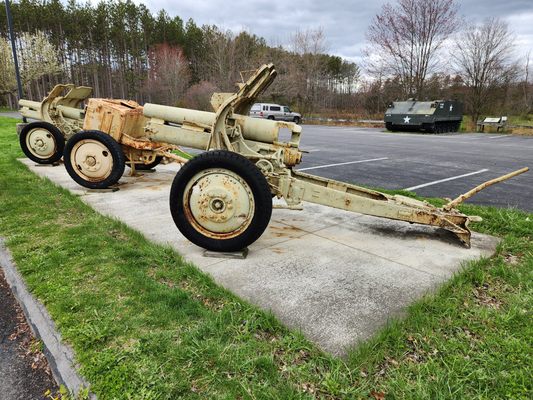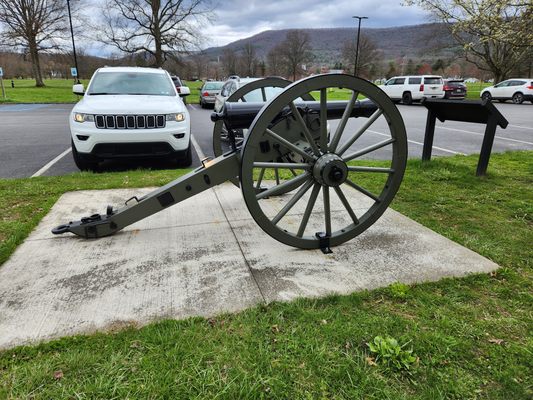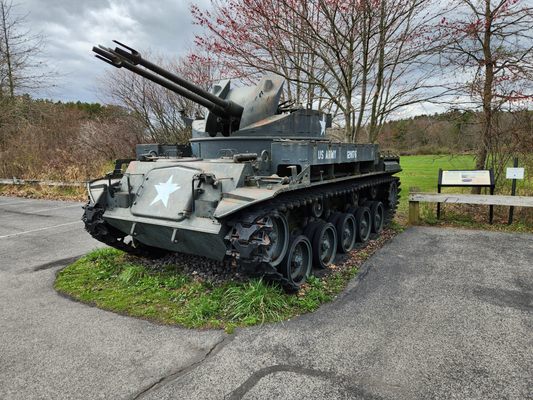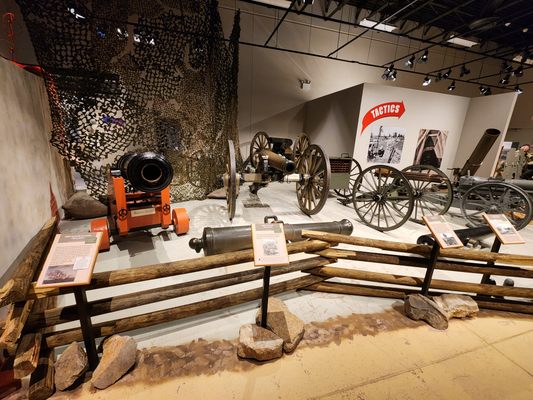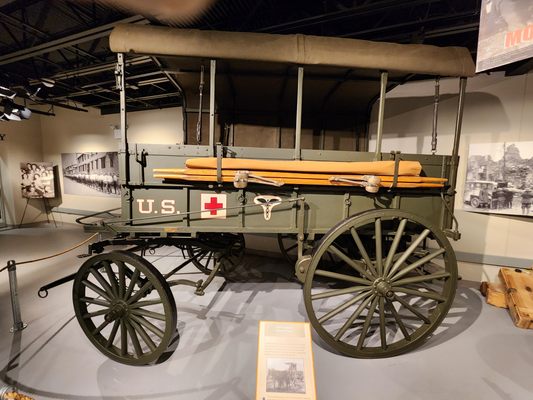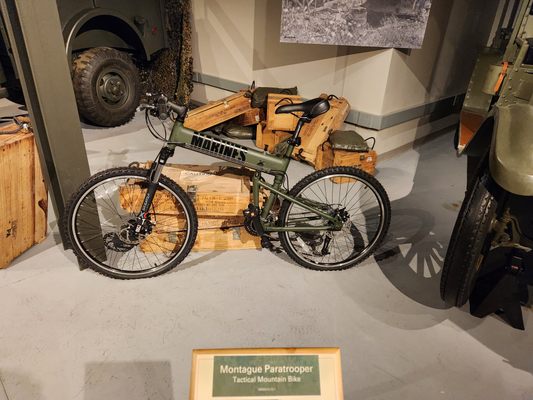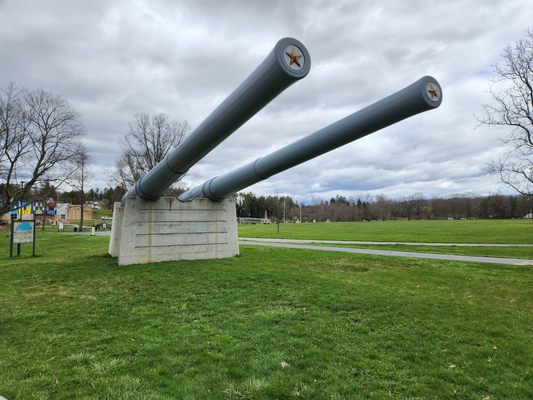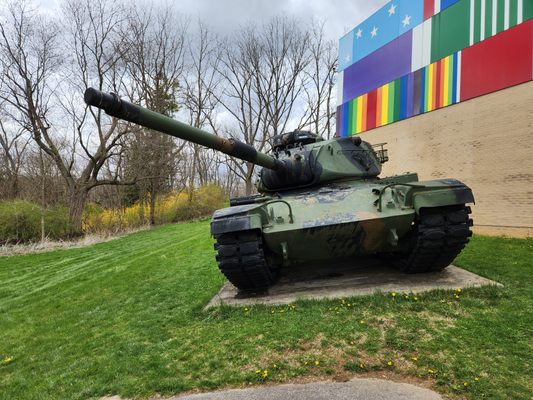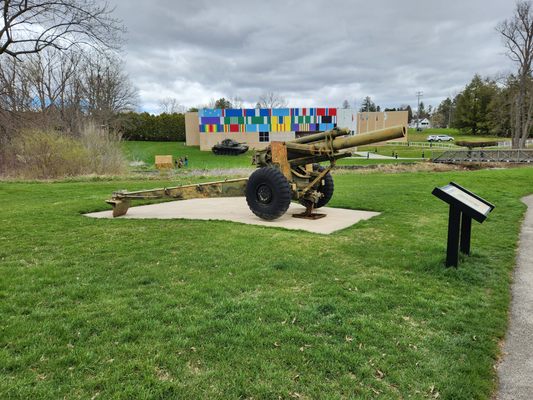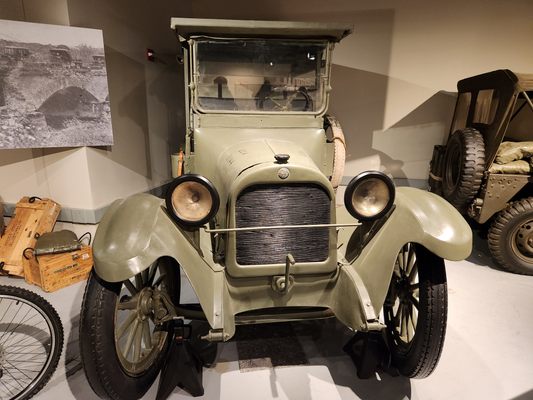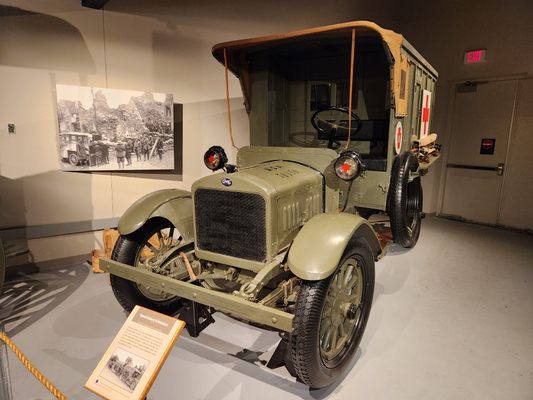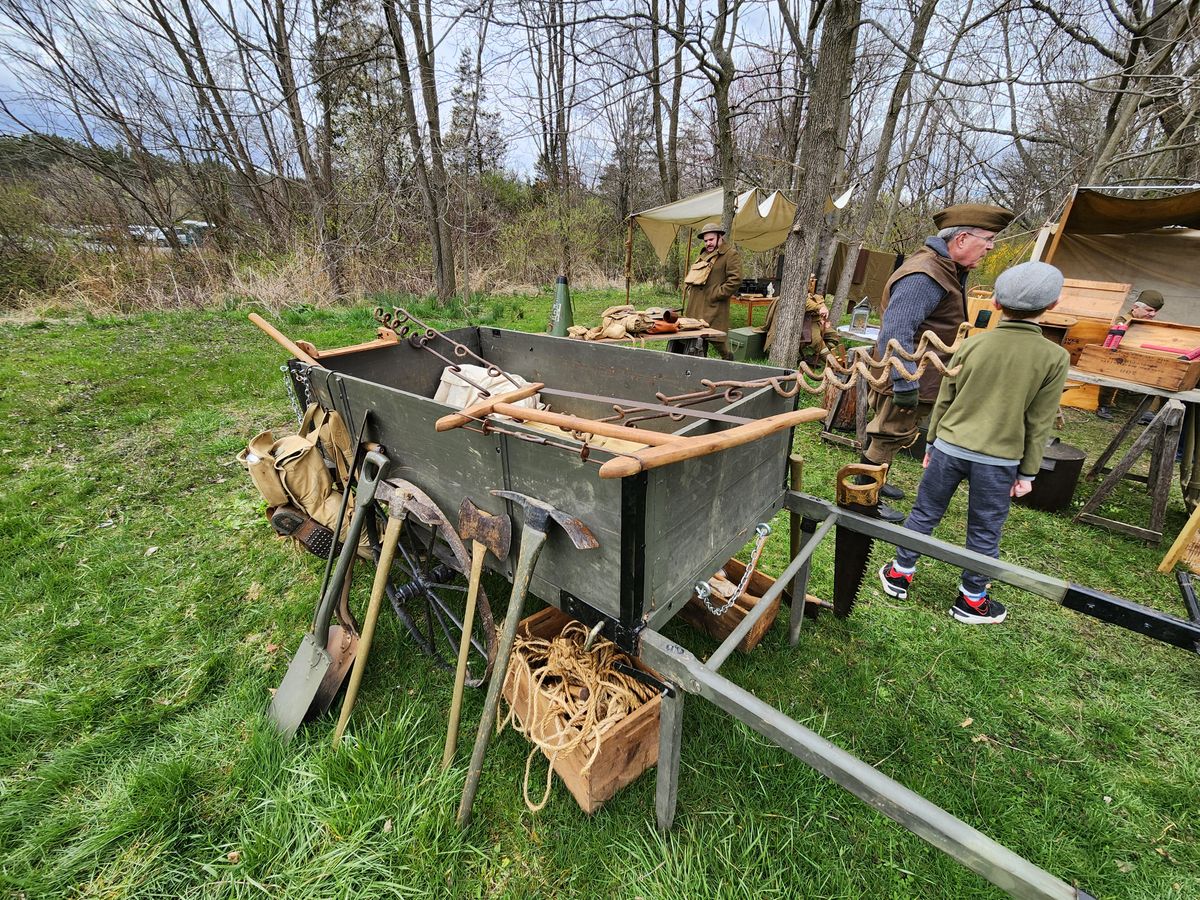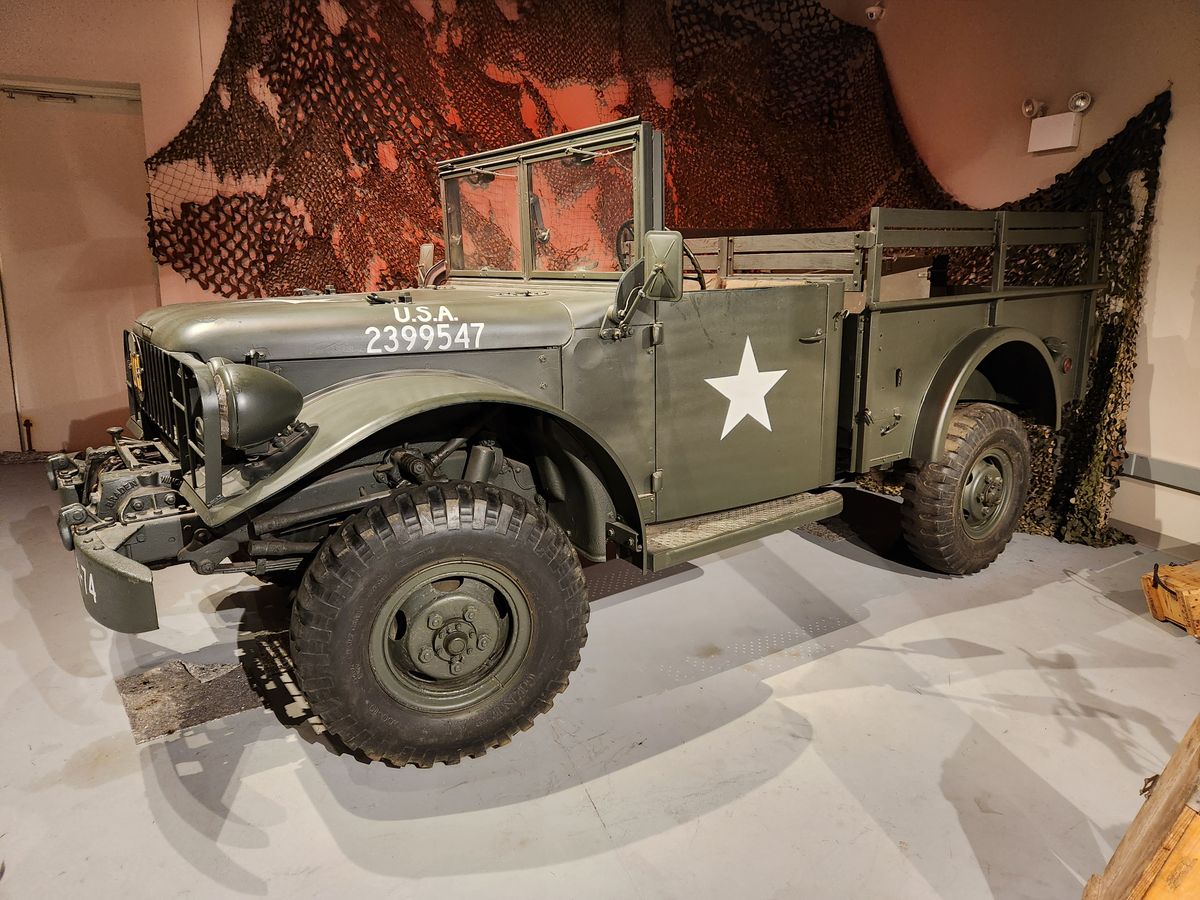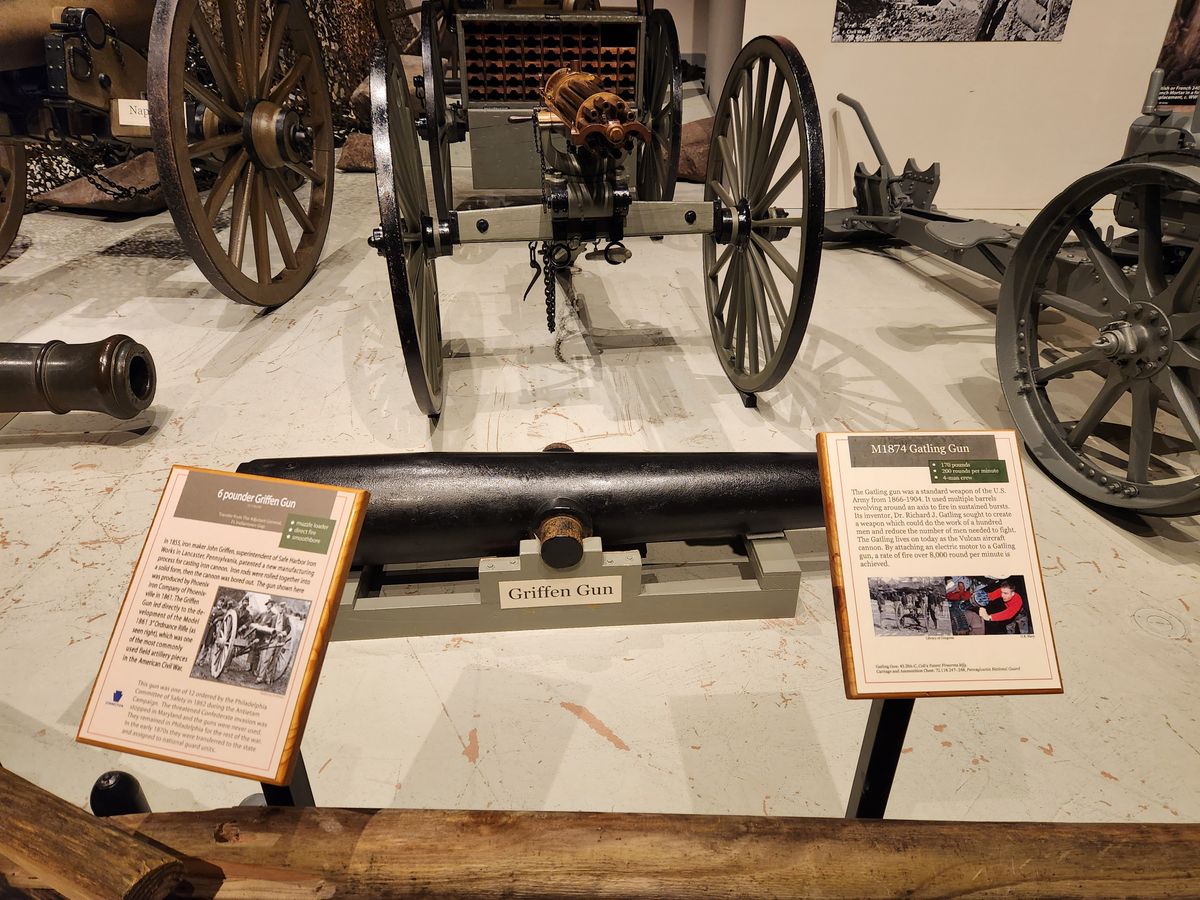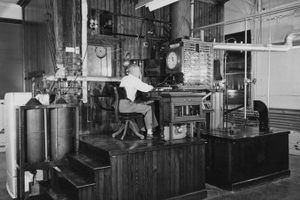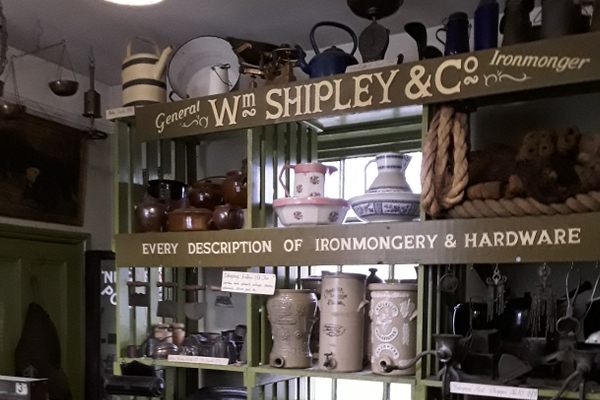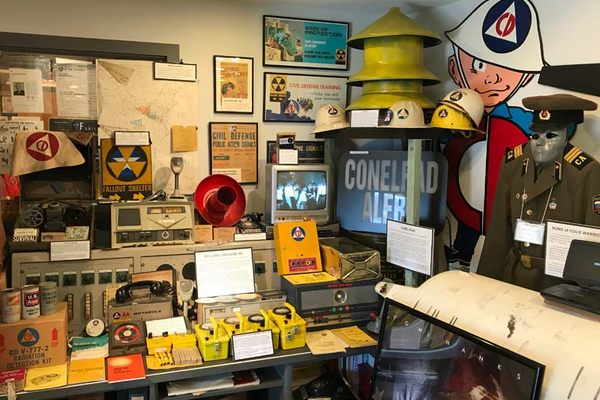About
Military museums typically focus on a particular service, or conflict, or even just a weapons system. This museum has a different slant: it looks at the contributions to the various services made by Pennsylvania. The scale of the contributions should not be surprising, as Pennsylvania played a key part in the Industrial Revolution during the 19th century, and remained a heavy-industry powerhouse till well into the 20th—and an extensive industrial base is critical in modern war.
The museum's interior displays are organized around five core components: tactics, small arms, sea power, air power, and logistics. One display is of the first tank built in the United States, the M1917, a copy of the French FT-17 Renault. For World War I, the new U.S. Tank Corps trained at a camp in Gettysburg, established in 1917 and commanded by then-captain Dwight D. Eisenhower. A six-pounder Griffen Gun is also on display. It was manufactured by Safe Harbor Iron Works in Lancaster using a new manufacturing process for casting iron cannons. The process was patented by John Griffen, the superintendent. The Griffen Gun was a precursor to one of the most common field artillery pieces in the American Civil War.
The section on sea power includes the story of several ships named USS Pennsylvania. The first was a wooden ship-of-the-line that met an ignominious fate in 1861, when she was burned in place at Norfolk Navy Yard in Virginia rather than be allowed to fall into the hands of the Confederates. The second USS Pennsylvania was an armored cruiser built in the Philadelphia Naval Shipyard. She was renamed USS Pittsburgh in 1912 to free the name for a battleship, the first of the U.S. super-dreadnought class, commissioned in 1916. (In the heyday of battleships, when they were the pinnacle of the fleet, U.S. battleships were named after states. This convention lasted into the first half of the 20th century.) Because she was oil-fired, a then-new technology, she didn't participate in European waters in World War I because all the infrastructure was set up for delivering coal. USS Pennsylvania was damaged at Pearl Harbor and served as an artillery platform in the Pacific theater, but was already largely obsolete. After the war, she was used as a target at Bikini Atoll. She didn't sink, but became so radioactive that she was later scuttled in deep water. Two of Pennsylvania's 14-inch guns were preserved and are displayed outside, while her bronze bell is displayed in the museum. The current USS Pennsylvania, commissioned in 1989, is a nuclear ballistic missile submarine, or "boomer."
Probably most unusual for a museum is the section on logistics. As the old saw has it, "amateurs talk about strategy; professionals talk about logistics," indicating that the subject does not generally have the glamor associated with weapons systems. Maybe exhibits such as this can help redress this imbalance. Among the items displayed is a precursor to the Jeep produced by American Bantam Car Company of Butler, Pennsylvania. Ambulances, including the last horse-drawn ambulance model employed by the US Army and the first motorized ambulance, both used in World War I, are also on exhibit.
Large vehicles are displayed outdoors, and re-enactors dressed and equipped as would participants from various conflicts often meet at the museum. Lastly, the museum has assembled resource packages for schools.
Related Tags
Know Before You Go
The museum is easy to find, in Boalsburg just off US-322 near State College. Hours are limited, however; check the website. The website will also have news of special events.
Community Contributors
Added By
Published
August 8, 2024
